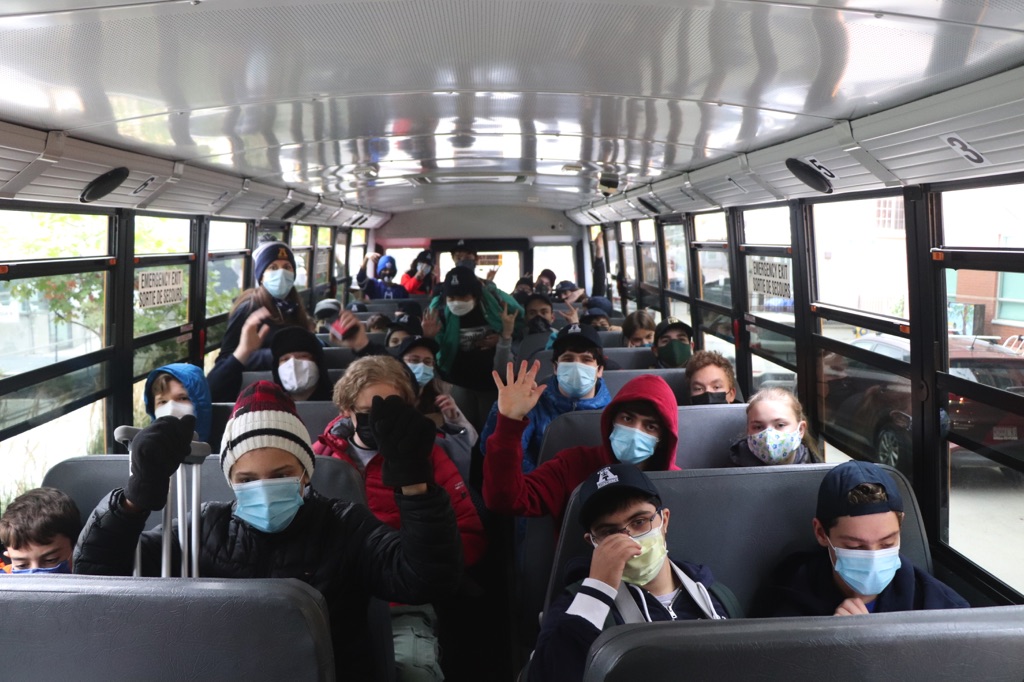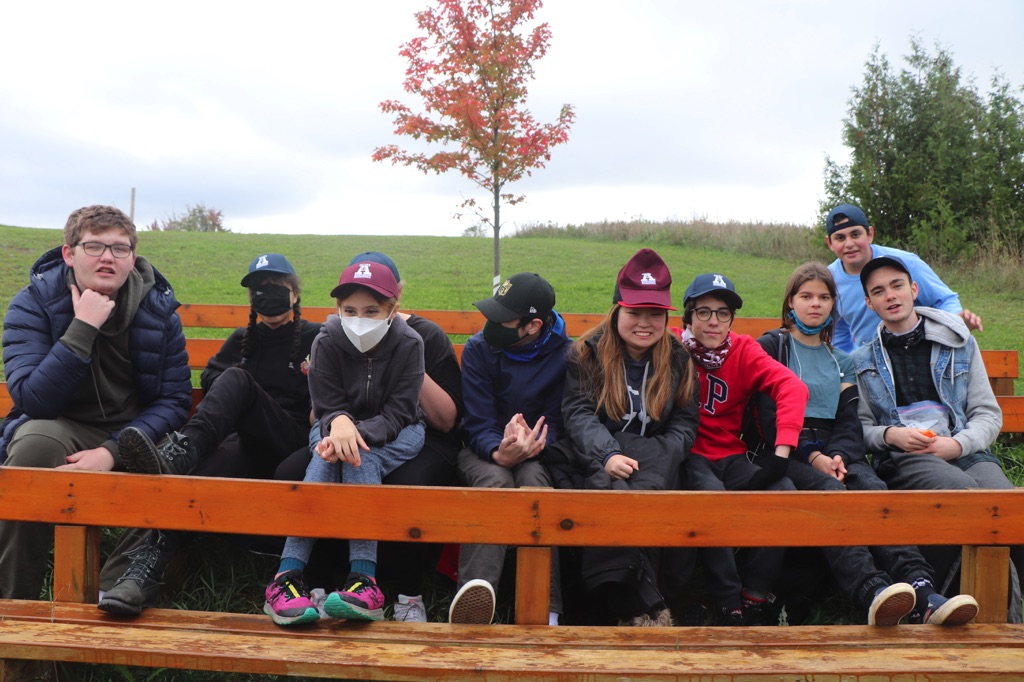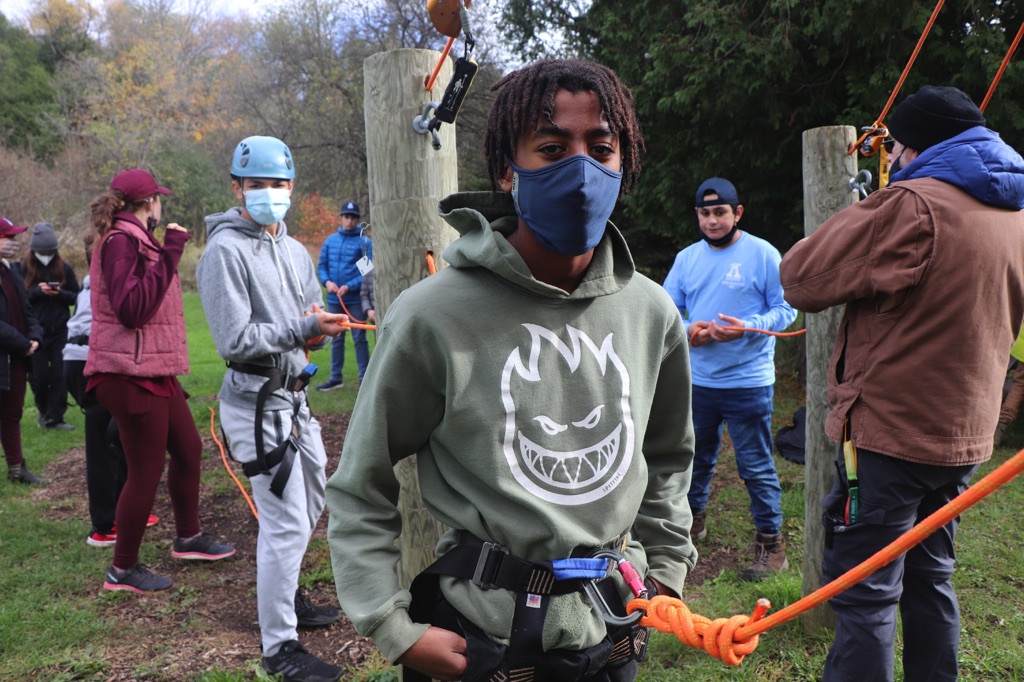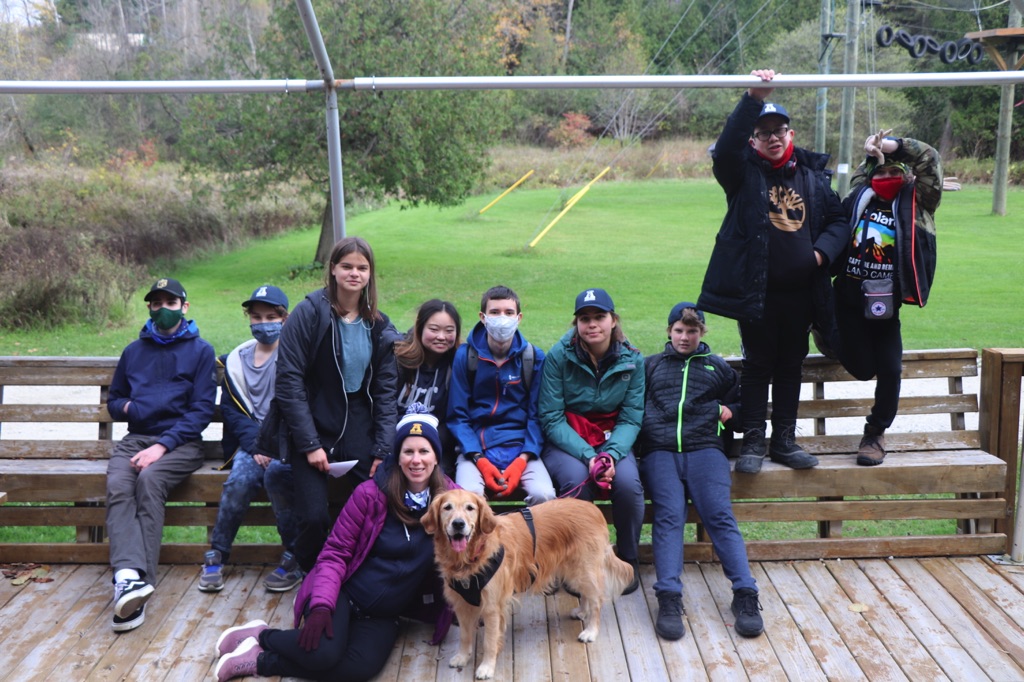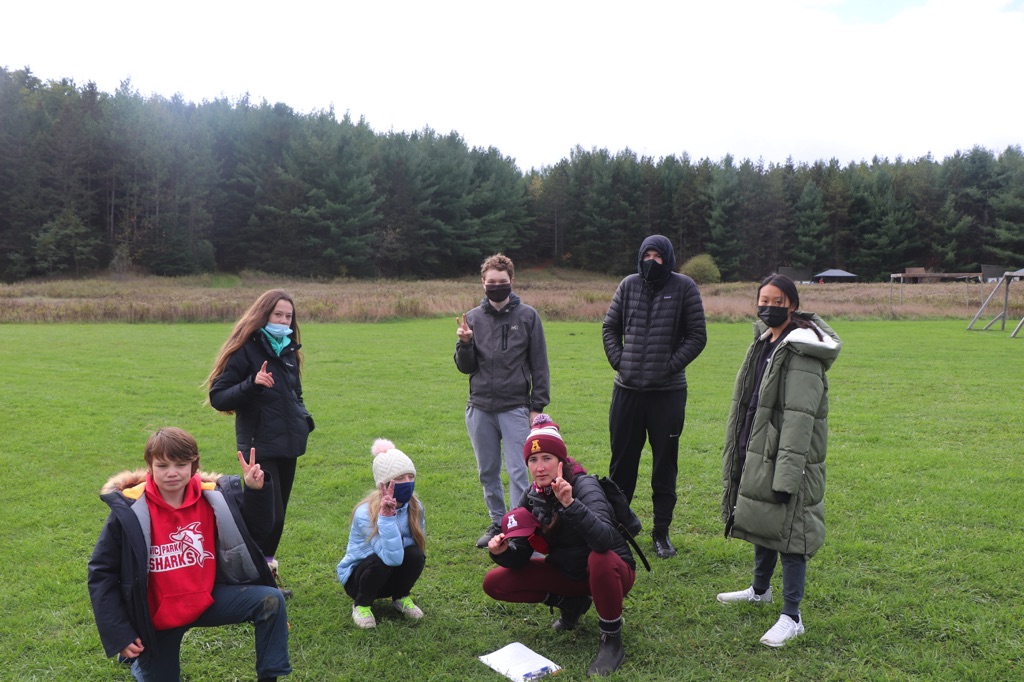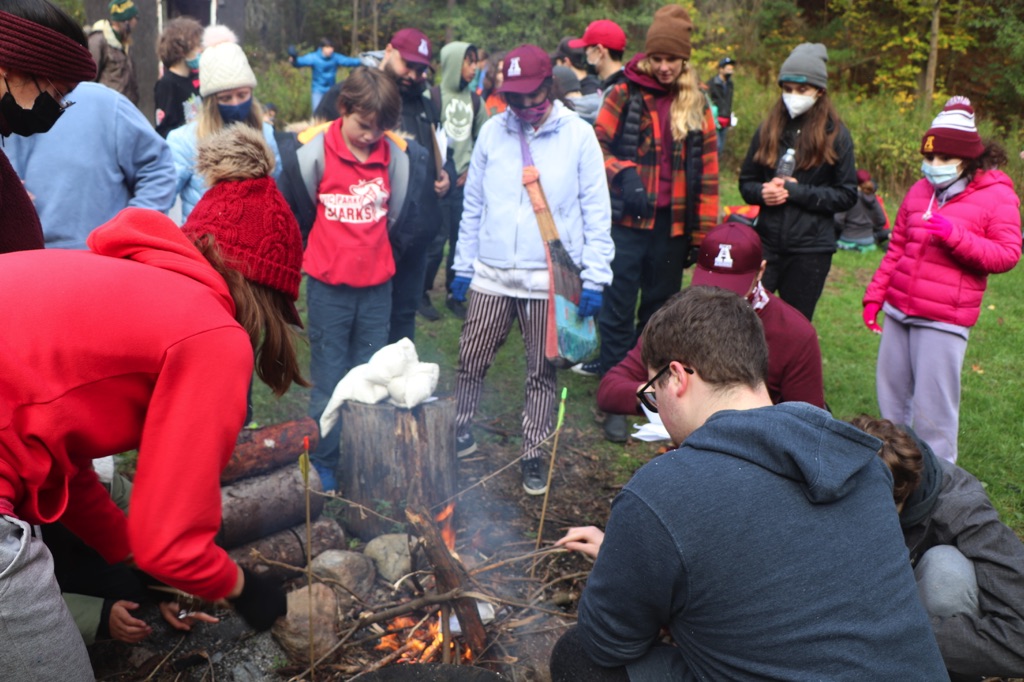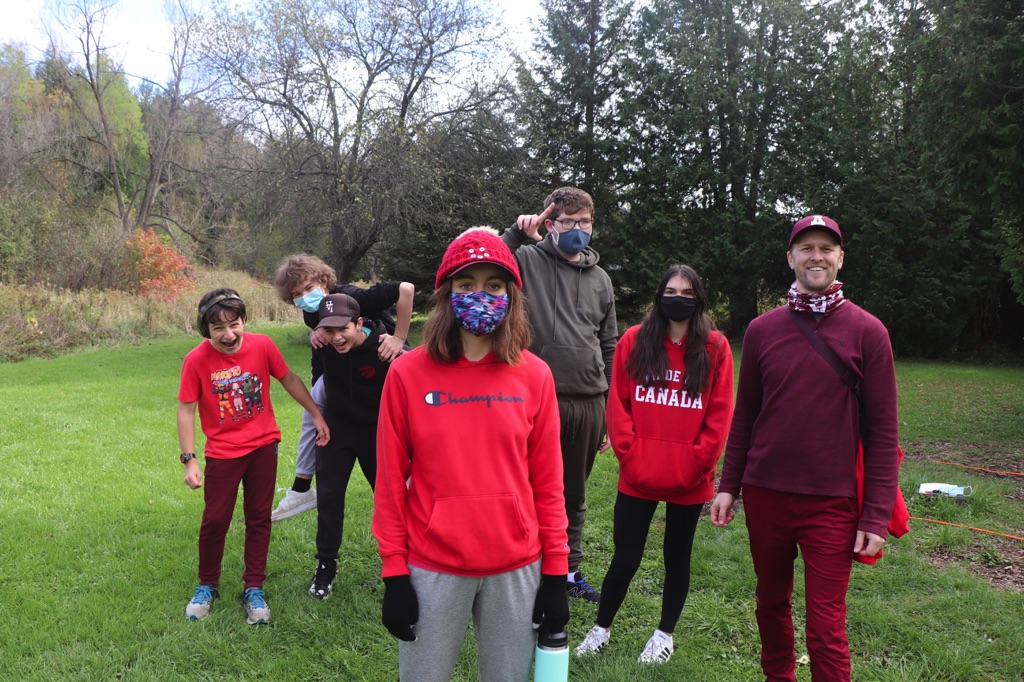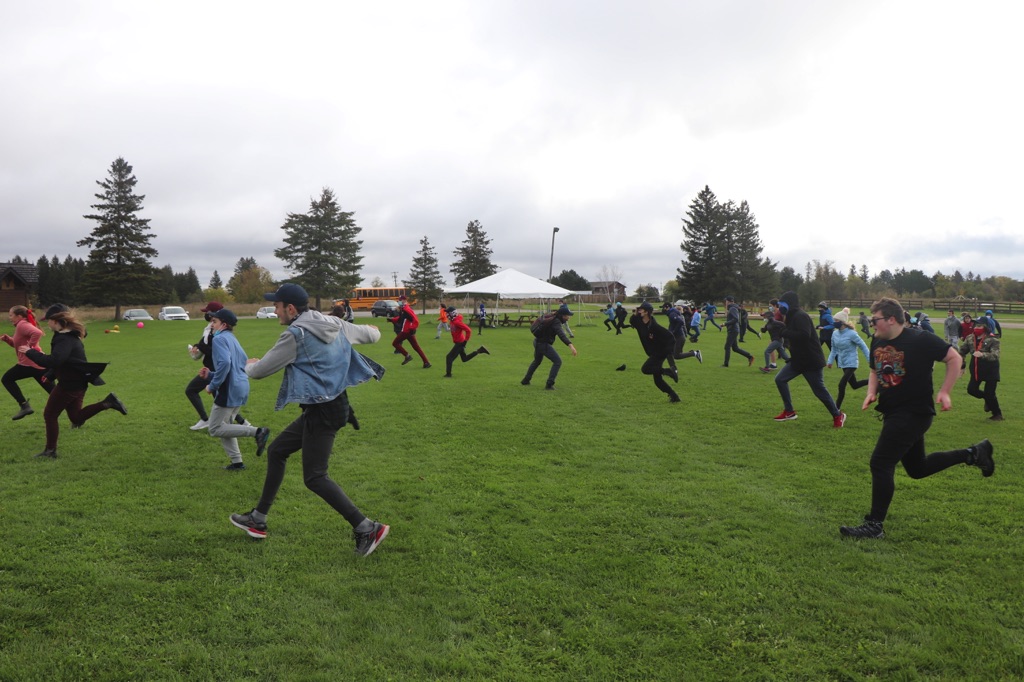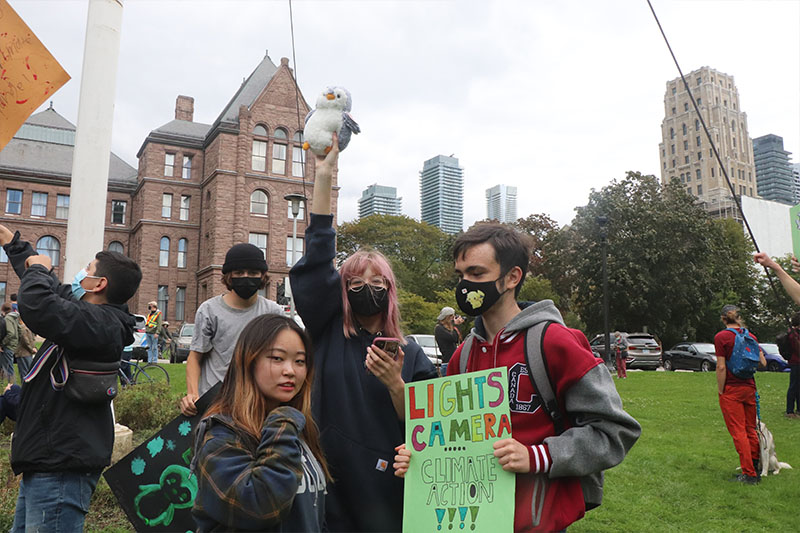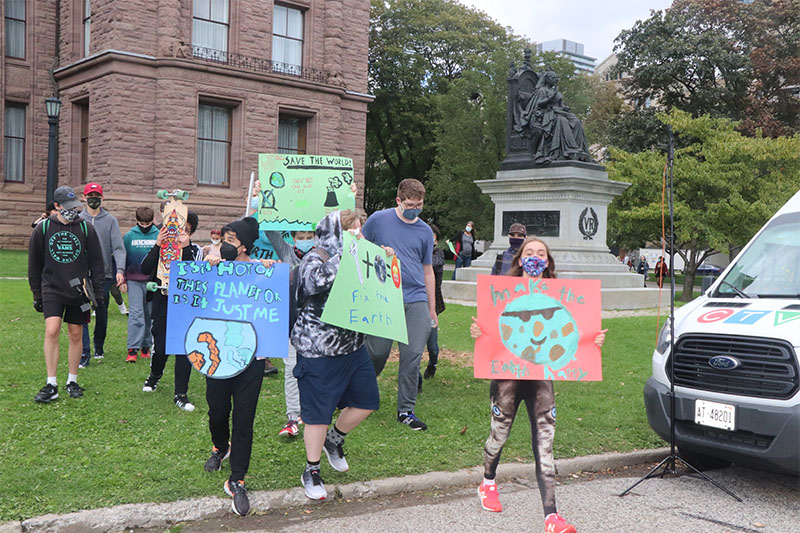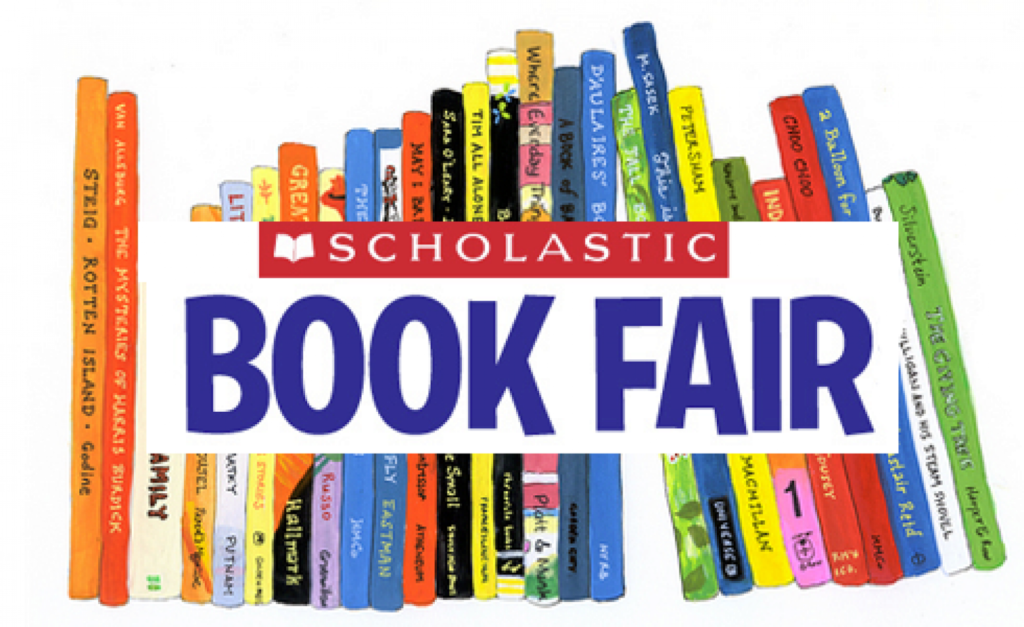After missing our beloved yearly trip to Cedar Glen for the first time in 2020, Academy staff and students made the yearly trip once again. Given current circumstances, this year’s trip was a day trip instead of our usual overnight outings. Students departed from the Academy at 9:30 am on the morning of October 22, new maroon and navy swag baseball caps on their heads. The excitement level on both buses was high as staff and students travelled down the highway.
After arriving and disembarking from the bus, the school was greeted by Cedar Glen staff, who after a brief welcome, led us in various short games. Afterwards, students split into one of 2 groups for the morning activities. One group participated in archery while the other in low ropes activities and games. At the halfway point of the day, the entire school gathered at the amphitheater where we were served pizza.
With lunch and the morning activities complete, the trip’s main event was ready to begin. Students were split into their advisory group squads (maroon and navy) and began the yearly anticipated Academy Games. Groups from each squad rotated amongst five stations, racing against the clock. Rock climbing, archery, trivia, and ragata challenges awaited every group as they ran from one station to the next. The game culminated at the fire building station where both squads raced to be the first to build a fire and burn through a string. After a competitive race, the maroon squad ended up on top, winning their third consecutive Academy Games. In a show of sportsmanship, the maroon squad cheered on the navy squad until they too could burn through their rope. We can’t wait until we can do it all again!
Check out the rest the rest of the pictures on our Facebook page!

